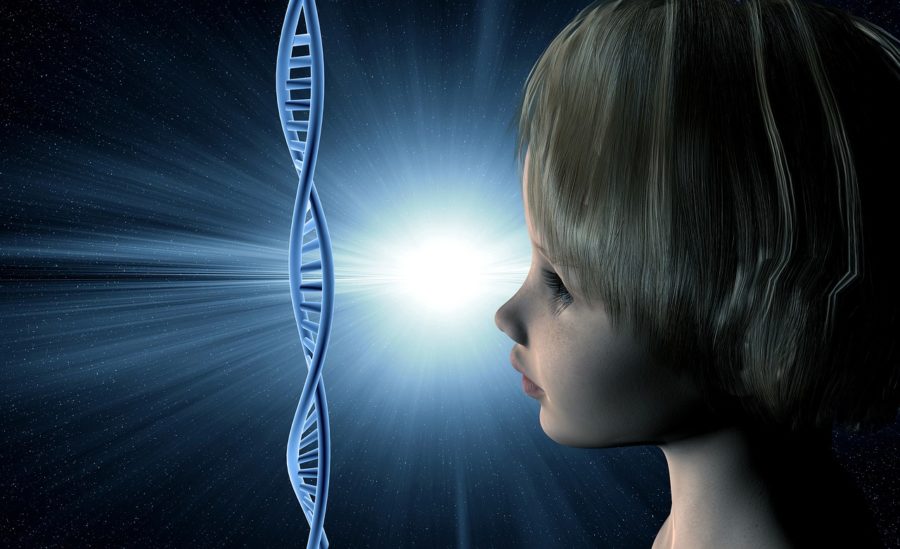Humans have finally created life in a lab.
Or at least, that’s what it looks like.
A group of scientists working at the Medical Research Council in Cambridge, Britain, have created an organism that has a wholly man-made DNA. It may even be an entirely new life-form, according to experts.
In any case, it is definitely a major milestone or breakthrough in the domain of synthetic biology.
Creating Artificial Life From Scratch
Researchers employed at the Laboratory of Molecular Biology reported having re-written the DNA of the Escherichia coli bacteria, commonly known as E. coli. They have fashioned a synthetic genome that is much more complex and almost four times as large as any that had been previously synthesized in a lab.
The bacteria, the scientists confirmed, are all alive, despite being oddly shaped and slow in reproduction. However, their cells operate in accordance with a new set of adaptive biological rules. They produce familiar proteins, albeit with the help of a reconstructed and revamped genetic code.
The Future Implications of Artificial Life
This achievement might lead to the creation of biological beings that can produce essential medicinal substances or other useful molecules. Humans may well be on their way to creating the first living factories.
These synthetic micro-organisms might also provide a clue about the origins of life, helping the scientific community understand how genetic code came into being in the first living creatures that inhabited planet earth billions of years ago.
Tom Ellis of the Centre for Synthetic Biology at London’s renowned Imperial College, said that this was a landmark in the realm of scientific development and research.
“No one’s done anything like it in terms of size or in terms of the number of changes before,” he proclaimed.
Biologists around the world have hailed this as one of the most important breakthroughs in their field in generations.
The Mechanics of Creating a New Genetic Code
In a living genome, each gene is detailed in a sequence of four distinct bases. These molecules are called thymine, adenine, guanine, and cytosine respectively. Often, they are known simply by the first letter of their name. Thousands of bases usually come together to form one gene.
Genes play a role in helping cells choose among the 20 available amino acids, which are the building blocks of essential proteins. Proteins, in turn, can be pictured as the tireless workhorses of a cell. They carry out a huge number of tasks in the body of a living creature. They help generate force in the muscles and ferry oxygen in the blood.
Almost a decade ago, researchers created a synthetic genome which consisted of one million base pairs. The new artificial E. coli genome, created in Cambridge, is reportedly four million base pairs long, according to a study published in the journal ‘Nature’. Completely new methods had to be used in the process of its construction.
The new study, which produced the artificial E. coli bacteria, was headed by Jason Chin, an experienced molecular biologist working at the MRC laboratory. He was curious why all extant living beings encode their genetic sequences in this rather confusing and complex manner. He wondered if there was another way in which genetic information could be stored by a living creature.
Intriguing Redundancies in the Natural Genetic Code
Every amino acid is produced in a cell with the help of three bases ordered within a single strand of DNA. This trio of bases is called a codon. These are of great importance for the proper functioning of the body. For instance, the codon known as TCT ensures that serine (an amino acid) is attached properly to the end of each new protein.
While there are just 20 amino acids in all, there are many more codons than are actually needed to make them all. There are numerous such redundancies in the genetic code, for reasons that elude scientists.
Overall, there are 64 codons, of which 61 work to encode the 20 amino acids. There are also 3 codons that are known as ‘stop codons’ and their primary function is to tell the DNA at what point to halt the construction of any particular amino acid.
For instance, six different codons govern the production of serine.
Jason Chin, like many other scientists before him, was fascinated by this strange duplication and the many redundancies inherent in the natural genetic code. He wondered if all the seemingly extra pieces of DNA were essential for life to function.
Universally, all forms of life make use of 64 codons. Hence, in the natural world, there was no answer to be found about whether or not life could exist with any fewer codons.
So Jason and his colleagues set out to create a whole new organism that would provide an answer to this question. The first modified version of the E. coli genome was designed by the Cambridge-based researchers on a computer program.
Editing Nature’s Design – Remaking artificial Life
This new genome only needed 61 codons for the production of all the required amino acids in the organism. Instead of three stop codons, it only had two. Importantly, this genome only used 4 codons to make serine, rather than six.

A good analogy for the entire process would be the way in which an editor treats a gigantic, verbose article. Redundant genetic material – like extra words – were identified and cut out to produce a more condensed and concise finished product.
Now that they had a computer-generated blueprint, the researchers synthesized the new DNA in a laboratory and introduced it into the bacteria. In essence, they had managed to substitute the genetic material created by evolution with a set of artificially manufactured genes.
A daunting challenge, but a tremendous step forward for mankind.
The bacteria created as a result of Chin’s experiment grow at a slower pace and take longer to develop than naturally occurring E. coli. However, they are most definitely alive and capable of reproduction.
The Future of Artificial Life
Chin, for his part, plans to build on the success of this experiment and remove more codons from the genes of living beings. This will enable him to further compress and trim the genetic code, removing even more of the redundancies nature had created.
Like any good editor, he is keen to know how streamlined and concise the genetic code can be without failing to support life.
After all, if we can create artificial life in a laboratory, what more miracles might we be able to perform if we put our minds to it!
Banner Image by kai kalhh from Pixabay
![]()



